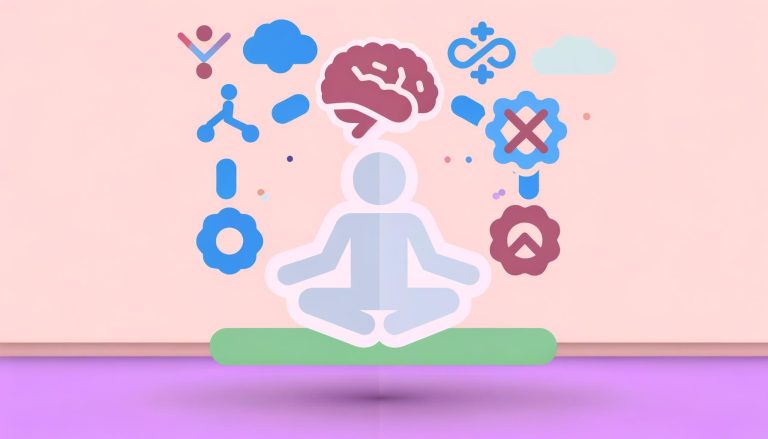Emotions are an integral part of the human experience, impacting our thoughts, behaviors, and interactions. Understanding and managing emotions can lead to improved mental health, better relationships, and a more fulfilling life. This article explores practical strategies to recognize and manage your emotions effectively, incorporating insights from various interdisciplinary fields.
Understanding Emotions: An Overview
Emotions are complex states that involve physiological responses, subjective experiences, and expressive behaviors. To effectively manage emotions, we must first understand them. Here are some common emotions and their characteristics:
- Happiness: Characterized by feelings of joy, contentment, and satisfaction.
- Sadness: Often results in feelings of sorrow, despair, and disappointment.
- Anger: Manifests as frustration, irritation, or rage.
- Fear: Includes feelings of anxiety, worry, and being threatened.
- Surprise: Can be positive or negative, associated with unexpected events.
Recognizing these emotions and the triggers that cause them is the first step towards managing them effectively.
Neuroscience of Emotions
The brain is central to the processing of emotions. Regions such as the amygdala, prefrontal cortex, and hippocampus play critical roles. The amygdala detects emotional significance, the prefrontal cortex is involved in regulating emotions, and the hippocampus helps store emotional memories. Understanding how these regions interact can provide insights into managing emotional responses.
Recognizing Your Emotions
Identifying your emotions can be challenging, but it’s a crucial part of emotional management. Here are some strategies to help you recognize your emotions:
Mindfulness Practice
Mindfulness involves paying attention to the present moment without judgment. It helps you become aware of your emotions as they arise. Practices such as meditation, deep breathing, or body scans can improve your ability to recognize and label emotions.
Journaling
Keeping a journal of your daily experiences and emotional responses can provide insights into your emotional patterns. Writing about your feelings allows you to reflect on them, making it easier to identify triggers and reactions.
Physical Symptoms
Emotions can manifest as physical symptoms. For example, anxiety might cause sweating or a racing heart, while anger could lead to muscle tension. Pay attention to these bodily signals to understand what you might be feeling.
Managing Your Emotions
Once you’ve identified your emotions, the next step is to manage them effectively. Here are some techniques to help you do so:
Cognitive Behavioral Techniques
Cognitive-behavioral techniques (CBT) focus on changing unhelpful thought patterns and behaviors. Techniques like cognitive restructuring can help you challenge and modify negative thoughts, while behavioral activation encourages engaging in positive activities that can improve your mood.
Emotion Regulation Strategies
Emotion regulation involves controlling the intensity and duration of your emotional responses. Some effective strategies include:
- Reappraisal: Changing the way you think about a situation to alter its emotional impact.
- Distraction: Diverting your attention away from the emotion-inducing stimulus.
- Acceptance: Allowing yourself to feel the emotion without trying to change it immediately.
Physical Activity
Exercise has been shown to reduce stress, anxiety, and depression. Physical activity releases endorphins, which are natural mood lifters. Incorporating regular exercise into your routine can help manage your emotions more effectively.
Social Support
Sharing your emotions with trusted friends or family members can provide relief and perspective. Social support networks offer a sense of belonging and can help you navigate difficult emotions constructively.
Benefits of Managing Emotions
Effectively managing your emotions can lead to numerous benefits, including:
- Improved Mental Health: Reduces the risk of anxiety, depression, and other mental health conditions.
- Better Relationships: Enhances communication, empathy, and conflict resolution skills.
- Increased Resilience: Builds the capacity to cope with stress and adversity.
- Enhanced Performance: Improves focus, decision-making, and productivity in various areas of life.
Practical Tips for Daily Life
Incorporate these practical tips into your daily routine to better manage your emotions:
- Set Realistic Goals: Break down tasks into manageable steps to avoid feeling overwhelmed.
- Stay Organized: Keep a planner or use digital tools to track your activities and commitments.
- Practice Gratitude: Regularly reflect on positive aspects of your life to cultivate a positive mindset.
- Seek Professional Help: If emotions become unmanageable, consider consulting a mental health professional.
Conclusion
Understanding and managing your emotions is a journey that requires self-awareness, mindfulness, and practice. By recognizing your emotional patterns and employing effective strategies, you can enhance your mental well-being, build resilient relationships, and lead a more fulfilling life. Remember, the goal is not to suppress your emotions but to navigate them with compassion and insight.
If you want to learn more about emotional health and management techniques, consider exploring the following resources:
Sources:


